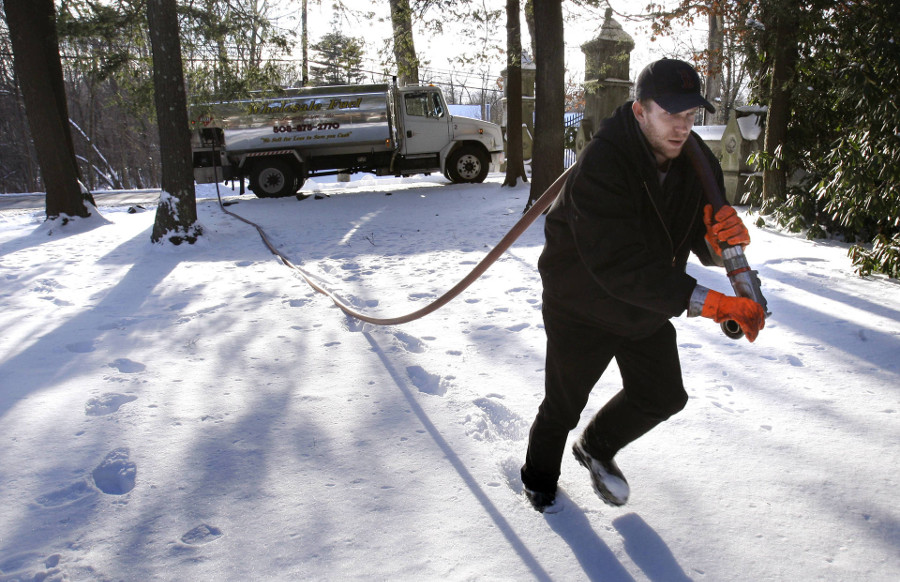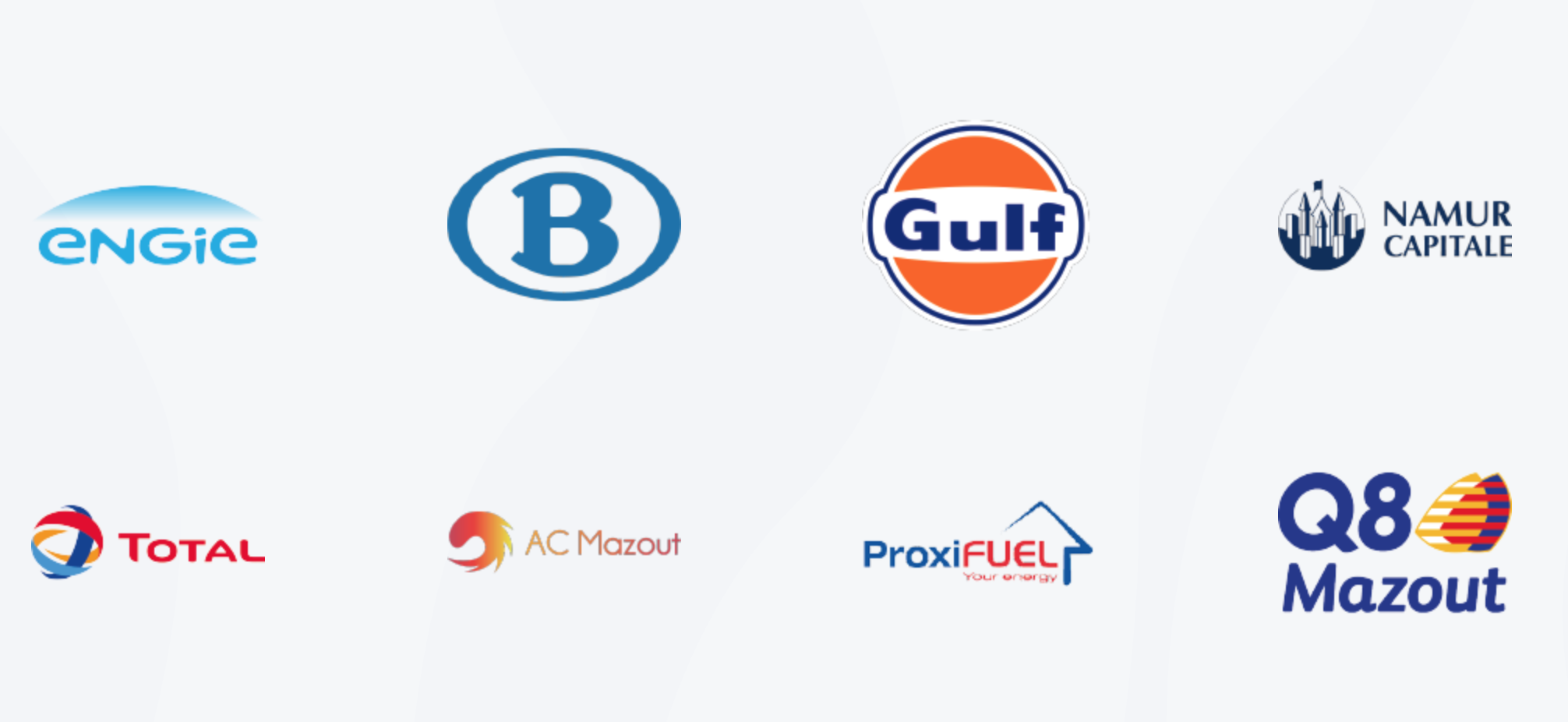FullUp 1A
The use of IoT to reduce distribution cost for stockable energy sources
€136,150
total amount raised in round
137%
- Backed by over 70 investors
- Eligible for a tax reduction
Campaign Closed
DISCLAIMER
Every investment decision must be based on an examination of an exhaustive set of information provided by the entrepreneur on their online profile. Spreds only proceeds to a limited verification of this information and does not control the investment opportunity within this company. Spreds did not verify the extent to which the business plan is deemed realistic and does not intervene in determining the final terms of the investment, including the retained maximum valuation. Spreds will align itself with the financial terms negotiated with the co-investor(s).
Description
The energy market is radically evolving over the years; energy giants are moving from energy supplier to service provider, connected thermostats are booming, consumers can remotely control their consumptions, and sometimes even have a real-time overview of their bill evolution. But overall, there has been more notable progress for consumers connected to the grid compared to those off-grid. Heating oil is still an indispensable commodity for around 20 million European off-grid households. The situation is not likely to change in the coming years: according to the World Energy Council, traditional fuels will prevail in the future energy mix until 2050. These heating systems are mostly installed in rural areas, where there are currently no affordable alternatives due to lack of infrastructure connections. The management of housing fuel is difficult for both users and suppliers. Building trustees, homeowners, facility managers must often physically check the amount of fuel left in the tank thanks to a graduated stick or on the mechanical gauge mounted on the tank. Once they are below a certain threshold, they will check the price of the day and plan on ordering the quantity they can afford. Finally, they will call their supplier and schedule with him a delivery. Some providers go a bit further and offer VIP service with automated delivery. Therefore, they will use mathematical models to predict consumption.
At Fullup, we are bringing a solution to the market to automate this management and making every energy source as easy to manage as the one on the grid! Therefore, we have developed a completely end-to-end solution with, an IOT device that you can easily screw on your tank and a complete dashboard that enables providers to optimise their logistics by delivering you at the right moment. Consumers have access to an online app, where they can monitor their consumption.
At Fullup, we are bringing a solution to the market to automate this management and making every energy source as easy to manage as the one on the grid! Therefore, we have developed a completely end-to-end solution with, an IOT device that you can easily screw on your tank and a complete dashboard that enables providers to optimise their logistics by delivering you at the right moment. Consumers have access to an online app, where they can monitor their consumption.

Problem
"To measure is to know"
This lack of metering has an impact on different actors.
Private households. Imagine you are waking up on NY's eve and plan to spend the evening with your family. Your to-do list is ready but first, let's shower! You hop in the shower, but wait...? No hot water? You are turning the tap: nothing? Worse, the heating is not working anymore! After a few minutes you realise that you forgot to go in the garden and check the level on your fuel tank. More than 20M households are annually confronted with this situation.
Building Trustees. You have to make sure your tenants will have heating. According to the country you live in you have two different options; sign a contract for automatic delivery with your provider, shifting the delivery problem from you to him or, providers do not provide this service and you have to visit the buildings every month and check the levels. Both solutions are inefficient and costly.
The fuel provider. You are trying to differentiate and increase your market shares by cutting the prices. You also offer a more VIP service to your customers that order a certain volume annually. This VIP service can include payment facilities, automatic delivery and also maybe delivery of premium fuel with premium additives. This automatic model ensures your volume but also results in delivery inefficiencies as you don't know the amount of fuel left. You try to calculate it with a mathematical model but you will fix an important error margin to guarantee your service.
Private households. Imagine you are waking up on NY's eve and plan to spend the evening with your family. Your to-do list is ready but first, let's shower! You hop in the shower, but wait...? No hot water? You are turning the tap: nothing? Worse, the heating is not working anymore! After a few minutes you realise that you forgot to go in the garden and check the level on your fuel tank. More than 20M households are annually confronted with this situation.
Building Trustees. You have to make sure your tenants will have heating. According to the country you live in you have two different options; sign a contract for automatic delivery with your provider, shifting the delivery problem from you to him or, providers do not provide this service and you have to visit the buildings every month and check the levels. Both solutions are inefficient and costly.
The fuel provider. You are trying to differentiate and increase your market shares by cutting the prices. You also offer a more VIP service to your customers that order a certain volume annually. This VIP service can include payment facilities, automatic delivery and also maybe delivery of premium fuel with premium additives. This automatic model ensures your volume but also results in delivery inefficiencies as you don't know the amount of fuel left. You try to calculate it with a mathematical model but you will fix an important error margin to guarantee your service.
Idea
Our company has developed a smart IOT device and application that aims to disrupt the current supply chain structure of heating oil and optimise its delivery on demand in rural areas. We use innovative IOT networks for communication, which requires no SIM-Card and permits the device to be installed easily. This drastically increases the scope and possibilities of installation. Our Device enables us to link together data from the clients and present distributors with a real-time forecast of demand. Promoting the ‘just-in-time’ delivery system, we aim to increase the efficiency of heating oil distribution. Furthermore, our system will regularise supply and demand for heating oil, stabilising distribution and making the service chain more sustainable by adopting the most economic route to serve a cluster of customers. Concretely, oil companies can do much better routing as usage information is in real-time and no longer estimated. They can avoid emergency trips when the customer runs out of fuel. Owners can benefit from better service, transparent market, more data on their fuel use patterns, updates in fuel use and changing fuel prices, promotional offers and an overall more regulated market. FULLUP therefore not only relieves the end user from the existing error-prone ordering process but brings the heating oil fueling market into the digital age.
Marketing strategy
As we will see below, Fullup is targeting different verticals one by one in order to deliver the most value to every specific use case with a core statement: "Connecting the things to the internet is not enough"
We bring a product-as-a-services model to the market that has an instant impact on our customers.
We bring a product-as-a-services model to the market that has an instant impact on our customers.
Fullup is using a lot of online and digital communication tools to reach out to its customers must it be B2C or B2B and adopting both a top-down and bottom-up strategy.
Distribution strategy
The first use case that we deploy is helping the fuel provider to reach a "fuel-as-a-service model" through our platform.
Customer acquisition goes through two different channels:
- Online sales where we go directly through the end customer, demonstrating the value to the fuel providers with a "bottom-up strategy". Through our "Fullup offer".
- Direct sales with fuel-providers with a top-down strategy through our "Tankconnect" offer. The fuel provider plays the role of distributor, ordering volumes, but often he will invest in the solution for the customer as it enables him to reduce its distribution costs, sometimes up to 50%.
Customer acquisition goes through two different channels:
- Online sales where we go directly through the end customer, demonstrating the value to the fuel providers with a "bottom-up strategy". Through our "Fullup offer".
- Direct sales with fuel-providers with a top-down strategy through our "Tankconnect" offer. The fuel provider plays the role of distributor, ordering volumes, but often he will invest in the solution for the customer as it enables him to reduce its distribution costs, sometimes up to 50%.
This vertical unlocked we plan to diversify in other verticals:
- Agriculture
- Smart Building
- Smart waste water management
- Agriculture
- Smart Building
- Smart waste water management
Internationalisation strategy
This fundraising is aimed at developing 2 extra countries where we already have some activities. We work with key customers for a top-down approach and in parallel, we develop our B2C activities to raise awareness and develop the market bottom-up.
We are planning to hire business developers and business farmers abroad.
Intellectual Property
We have protected our brand, and we have a patent on the design of our product.
Major contracts
A picture says more than a thousand words.

Main partners
